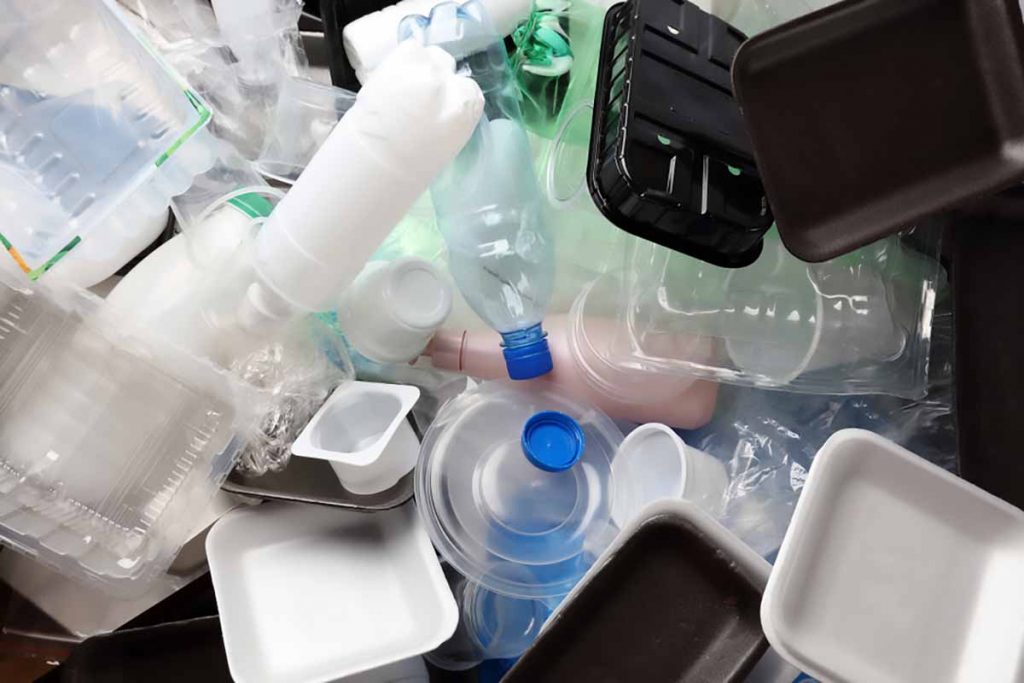
Major brand owners in Canada reported using 73 million pounds of post-consumer resin in their packaging in 2022, according to the Canada Plastics Pact. | Marina Onokhina/Shutterstock
Some of the largest brand owners, resin producers and other packaging stakeholders in Canada reported their progress on voluntary goals made through the Canada Plastics Pact this week.
The Pact launched in 2021, one of numerous related Plastics Pacts globally that are affiliated with the Ellen MacArthur Foundation and its New Plastics Economy Global Commitment program. The initiative has voluntary goals for major packaging stakeholders to meet by various target dates.
The Canada group’s latest report, which was announced on Jan. 9, covers 90 Pact members during 2022, of which 46 were companies within the plastics packaging value chain. These include 30 retailers/brand owners, four packagers/converters, nine plastics processors and three chemical/resin producers. The other members were related organizations doing work in research, advocacy, standards development and more.
The Pact estimates Canada’s residential waste stream and deposit return systems combined generated 2.16 billion pounds of plastic packaging in 2022, of which 20% was recycled. That’s up from 12% in 2019, which the Pact uses as a baseline year.
Post-consumer resin (PCR) use hit 12% by weight, up from 11% in 2021 and 10% in 2020. By weight, Pact members produced 592 million pounds of plastic packaging in 2022, and they used 73 million pounds of PCR. That’s up from using 50 million pounds of PCR and 490 million total pounds produced in 2020.
“This surge in PCR usage reflects a shift from mere goal-setting to actual implementation, marking a significant milestone,” the report states.
The Pact reported the highest member-made products with recycled content were PE tubes (58% PCR), PET bottles (38%) and PET thermoforms (20%). Rigids and flexibles were the lowest product categories for recycled content, both averaging less than 5% PCR.
On the design front, 43% of plastic packaging from Pact members was designated either recyclable, reusable or compostable in 2022, down from 44% the prior year. The Pact attributed the decrease to additional members who joined in 2022. (The Pact brought on three additional retailers/brand owners as members in 2022.)
The Pact has a goal for members to work on eliminating a group of 15 plastic packaging items designated as “problematic,” and the report indicates all member companies have plans in place to eliminate eight of those items by 2025. Those are plastic checkout bags, stir sticks, stirrers, beverage six-pack rings, cutlery, straws, PETG and polystyrene.
The report praised the groundwork laid by Pact members, but it also noted “we must acknowledge that the pace of progress may not be as swift as initially anticipated.”
“In response to these realities felt not only by [Canada Plastics Pact, but others around the world, the Ellen MacArthur Foundation (EMF) is currently reviewing and redefining the timelines of some of the targets set forth by Plastics Pacts, with details expected to be released in mid-2024,” the report states.
The Pact is currently developing what it calls “Roadmap 2.0,” a 12-year plan that will guide the next several years of action by members. The report indicates this plan will be a “living document that is executed in two-year action plans.”